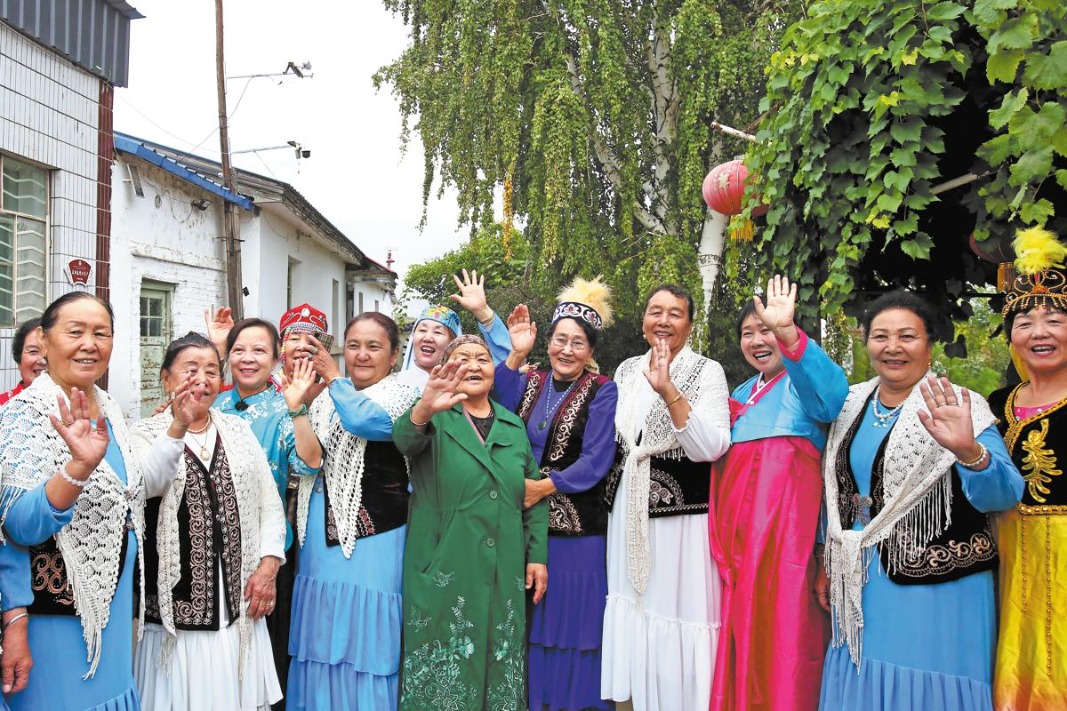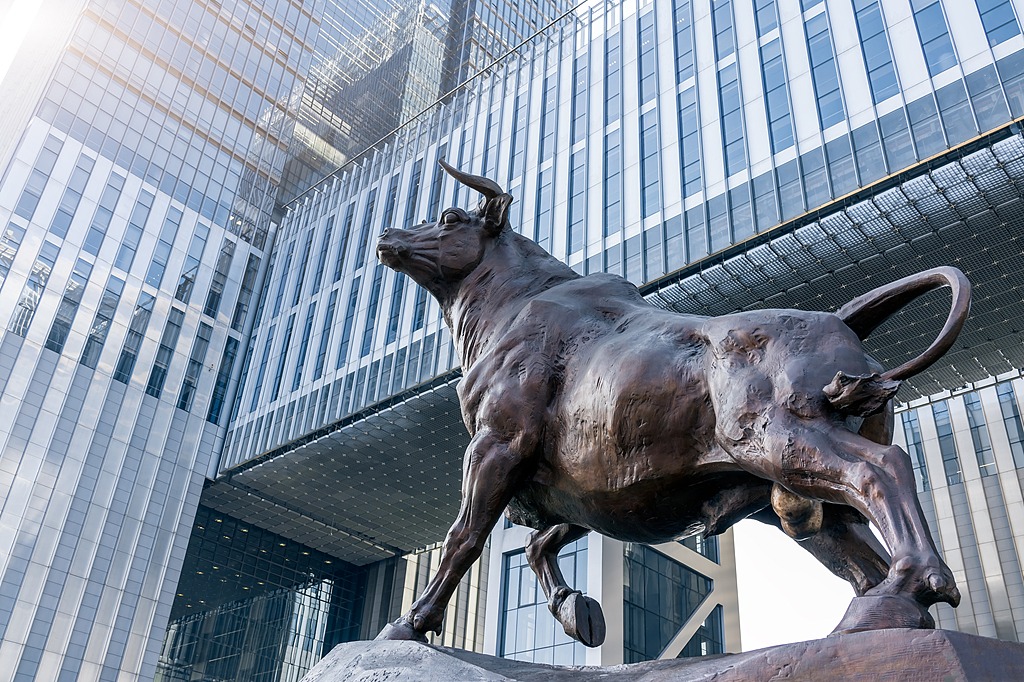CPC Guidelines for Governing Xinjiang in the New Era: Practice and Achievements
The State Council Information Office of the People's Republic of China September 2025

VIII. Significant Progress in Cultural Development
Culture nurtures the mind and cultivates lofty aspirations. In studying and carrying out Xi Jinping Thought on Culture, Xinjiang has bolstered stronger cultural confidence, strengthened cultural identity and bonds, and developed the Chinese culture, including its diverse ethnic cultures, with greater momentum and more robust measures. The region has continued its systematic protection of cultural heritage, boosted cultural creativity, and promoted the prosperous development of socialist culture, to better meet the new aspirations of the people of all ethnic groups for enriched intellectual and cultural lives.
Cultural heritage under effective protection. Adhering to the principle of prioritizing protection, promoting sound utilization, and minimizing interference, Xinjiang has improved its comprehensive preservation of cultural heritage. It has formulated plans for the protection of regional cultural heritage, and released local regulations such as Regulations on the Protection of the Ancient City of Kashi and Regulations on the Protection of the Intangible Cultural Heritage of Manas, as part of its continuing efforts to strengthen legal guarantees for preserving cultural heritage. By 2024, Xinjiang had housed 195 institutions of cultural heritage protection at all levels, 150 registered museums, and 9,545 verified and registered immovable cultural relics, among which 6 were world cultural heritage sites, 133 were key cultural relics sites under national-level protection, and 779 were cultural relics sites under the protection of the autonomous region. The region also boasts 3 intangible cultural heritage items on the list of the UNESCO, 141 items on the national representative list, and 567 items on the list of the autonomous region. Xinjiang has coordinated the protection of cultural heritage and the development of urban and rural areas, provided effective protection and sound management for historic and cultural cities, towns and villages, traditional villages, and streets and districts with historical and cultural significance, and ensured their rational utilization. The region has promoted the preservation and exhibition of key ruins and sites reflecting past central authorities' viable governance of Xinjiang. For instance, the ruins of the Western Regions Frontier Command, Ulanbay Ancient City, Beiting City, and the Ili Commandery have been well preserved and put into good use. Also, the construction of the National Archeological Park of the Site of Beiting City, Museum of the Western Regions Frontier Command, and Silk Road and Great Wall Culture Museum has been completed. The archeological research of Xinjiang falls under the broader "Archeological Finds in China" project. Xinjiang has implemented projects such as the protection and utilization of religious ruins on the rim of the Tarim Basin, built the Qiuci Museum and the Qiuci Wei and Jin Ancient Tomb Site Museum, and promoted the protection of the Kizil Grottoes, Subashi Buddhist Temple Ruins, Loulan Ancient City Ruins, and the Nestorian monastery site on the west side of Turpan City. Xinjiang's Tongtiandong Cave, Keyakekuduke Watchtower site, and Mo'er Temple ruins have all featured on China's "top 10 archeological discoveries of the year" list.
Flourishing cultural and artistic creation. Focusing on producing excellent cultural and artistic works, Xinjiang has improved its mechanism for serving, guiding and organizing literary and artistic creation, resulting in a continuous emergence of excellent works. In terms of literary creations, it has launched the Tianshan Literature Award, and many Xinjiang-themed literary works have received nationwide acclaim, including Ben Ba, winner of the Mao Dun Literature Prize; Distant Sunflower Fields and The Western Great Wall, winners of the Lu Xun Literature Prize; and The Flowers Are Always This Red, winner of the national Steed Awards for Ethnic Literature. In the performing arts, songs such as The Shepherds of Koktokay and Apple Fragrance have familiarized the whole country with melodies from Xinjiang; dance dramas such as Five Stars Rise in the East and Zhang Qian have powerfully reflected the nation's history and spirit; dances such as Markit Under the Sunshine and Grandpa's Samawar have been honored with the Lotus Award, China's highest honor in dance; and the performer of the Shaanxi opera Burning Incense received the prestigious China Theater Plum Blossom Awards. In film and television, Xinjiang-themed films have won the Best Works Award for seven consecutive years, including the highly acclaimed Fade Away Pastoral; the children's film The Little Horsewhip was a winner at the China Movie Awards; the TV drama To the Wonder gained viral recognition and was broadcast in several other countries; and the documentary film Fabric of Lives received substantial praise from audiences. Additionally, the brilliant performance at the Kashi sub-venue of the Central Television Station's 2024 Spring Festival Gala captivated viewers around the world.
Continuous improvement of the system of public cultural services. Xinjiang has promoted consistent and equal access to public cultural services and channeled quality cultural resources to the community level, protecting the people's cultural rights and interests and improving their quality of life. By the end of 2024, Xinjiang had established 111 public libraries, 118 cultural centers, 1,126 cultural facilities in towns, townships and sub-districts, and 11,783 village cultural centers, providing 695.86 sq m of public cultural facilities per 10,000 people. The autonomous region now boasts 88,800 sports venues, and has established a comprehensive, five-tier public cultural service network spanning the village, township, county, prefecture, and the autonomous region levels. Believing that culture should serve the interests of the people, Xinjiang has made great efforts to ensure every village and household has access to radio and television programs, with coverage rates now reaching 99.26 and 99.37 percent, respectively. The people of all ethnic groups now have easy access to rich cultural products in their neighborhoods. From 2012 to 2024, nearly 1.37 million movie screenings were held for free in nearly 9,000 venues in rural villages or communities and covered all administrative villages. The region has held the China Xinjiang Folk Art Season, Conference on Reading, and village Spring Festival galas that also reached all villages and communities. Additionally, the establishment of the pomegranate seed art troupes has expanded access to literature and the arts in rural areas through regular performances that benefit local residents.
Accelerated development of cultural and tourist industries. Xinjiang encourages the positive interplay between culture and tourism, and continues to advance the deeper integration of the two sectors. This enables tourists to embrace not only Xinjiang's breathtaking landscapes, but also its profound culture. To advance this deeper integration, the region has worked out a development plan for cultural and tourist industry clusters, the worth of which could reach RMB1 trillion and more. In its efforts to promote the development of sports tourism, sports training and competition, Xinjiang has hosted the Taklimakan Rally, Tour of Salimu Lake Road Cycling Race, and Freeride World Tour. The industrial cluster effect is becoming increasingly apparent in the region. Resources are now being channeled into developing the winter sports tourism sector, with 72 skiing venues and five national ski resorts established across the region by the end of 2024. Xinjiang now stands among the top in the country's winter tourism. Road trips and special interest tours are immensely popular here, with the Xinjiang section of the G219 national highway, the S101 provincial highway, the Dushanzi-Kuqa highway, the Altay-Hemu highway, and the highway around the Bosten Lake all becoming viral travel destinations among tourists, giving rise to new forms of tourism products in the region. The number of tourists to Xinjiang has increased from 48.6 million in 2012 to 302 million in 2024, a 6.21-fold increase, and the total revenues from tourism in Xinjiang were RMB359.5 billion in 2024.


































